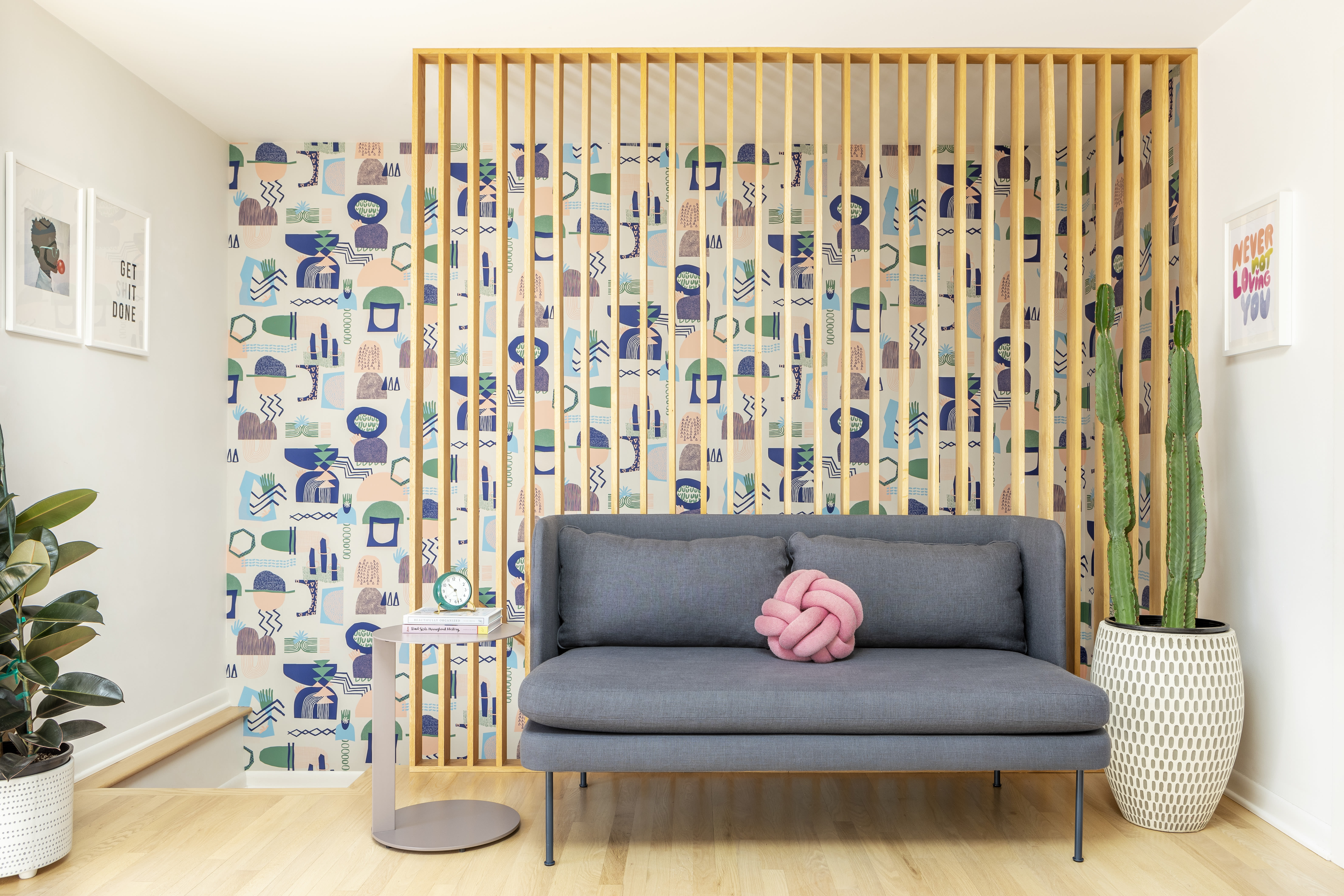Get a Load of Portland’s Most Lavish Wall Art
Juju Papers: “Barn Owls and Hollyhocks,” by Carson Ellis
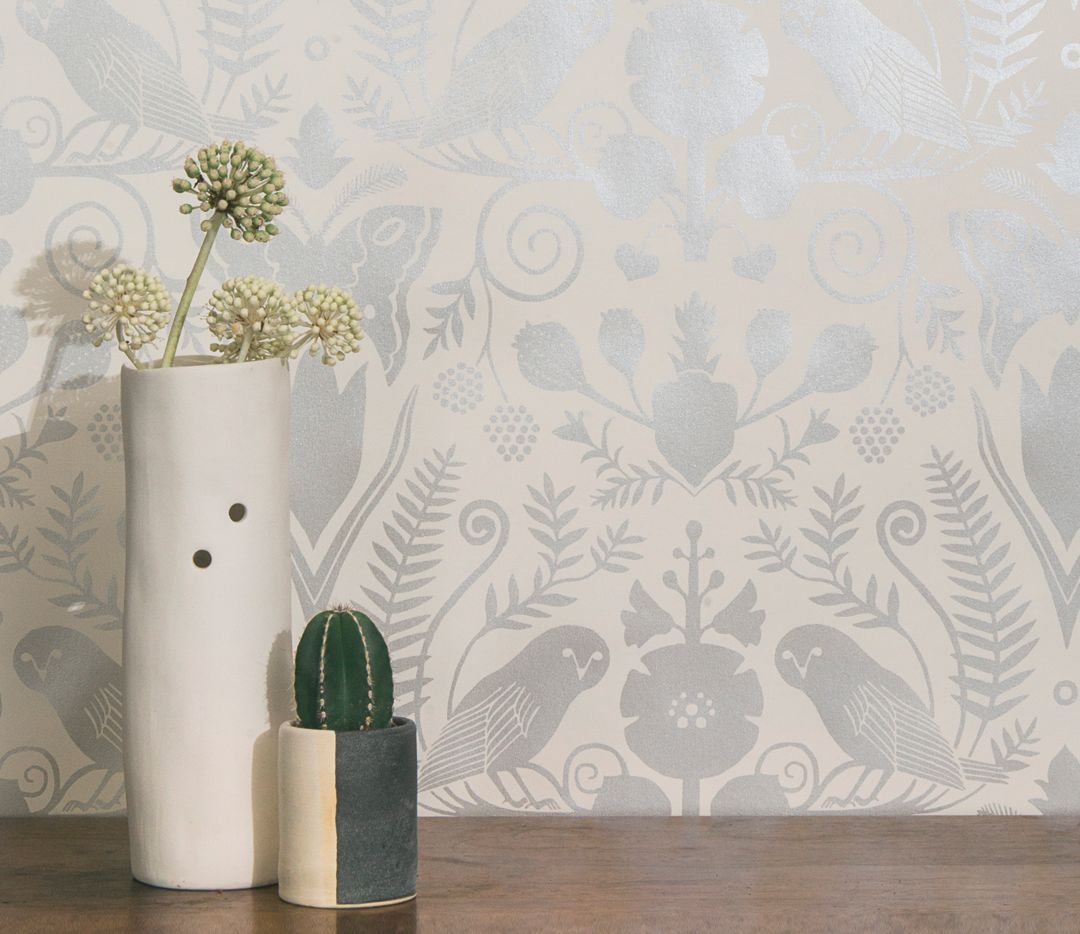
Image: Courtesy Juju Papers
In 2013, lauded illustrator and author Carson Ellis sketched a pen-and-ink sheet of birds and flowers intertwined with her family’s initials. Her first stab at wallpaper, it was earmarked for the library walls of the 19th-century farmhouse south of Portland Ellis shares with her husband, musician Colin Meloy. The owls that call the property’s antique barn home anchored the moody flora and fauna print—a tribute, in part, to a sick barn owl Ellis once rushed to the Audubon Society for treatment. The illustrator worked with chic Portland wallpaper outfit Juju Papers on a custom screen print. Struck by the clean yet fanciful design, this year Juju owner Avery Thatcher (known for her own more contemporary, eye-calming patterns) suggested ditching the initials, adding silver- and rose-gold-on-cream colorways, and offering it to the public. That original owl? “It died. I was so sad,” Ellis says. “But designing a wallpaper for it gives the story a bit of a happier ending.”
Get it: $200/roll at jujupapers.com.
Trish Grantham and Michael Paulus: Custom-Painted Rorschach Inkblot “Wallpaper”
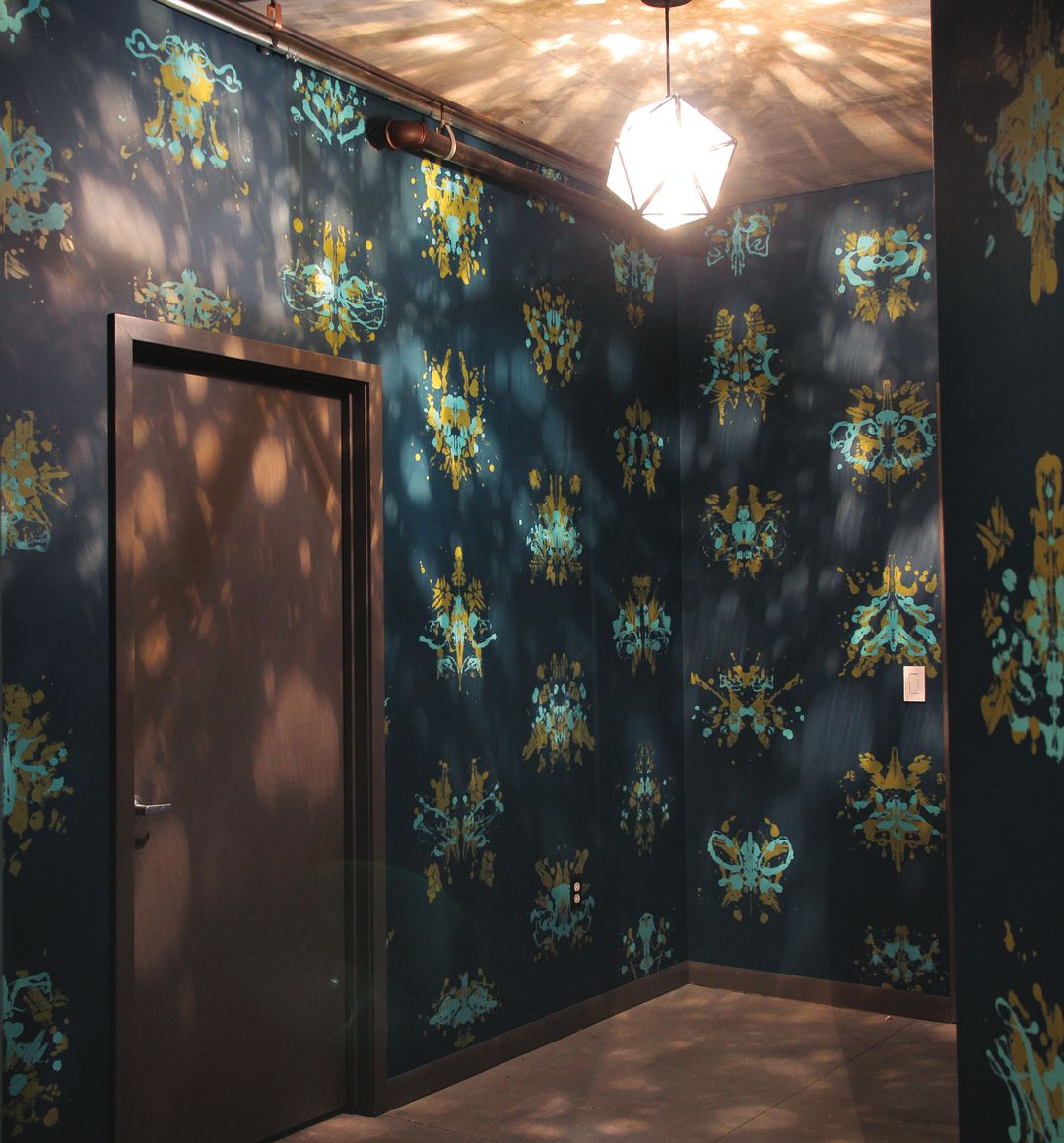
Image: Courtesy Trish Grantham
Portland artist and interior decorator Trish Grantham was sick of lifeless, mass-produced modern wallpaper. So, partnering with local artist Michael Paulus, she started hand-painting one-of-a-kind “wallpaper” directly onto her clients’ walls instead. The collaboration has sparked some of the city’s most striking murals—east-side bar Angel Face’s blushing pink floral landscape included. For one of the first home installations they worked on together, in 2014, Grantham wanted the recurring print on the walls to resemble a Rorschach inkblot. Paulus was intrigued by the juxtaposition: “I like artwork that’s out of context,” he says. Lisa Zigarmi and Paul Del Vecchio hired Grantham to style their entire home, and gave her carte blanche. They were out of town while Grantham and Paulus painted the inkblots in their foyer, and were welcomed back with walls that Zigarmi (a psychologist by training, fittingly) says “provide endless wonder ... Two years later, I’m still excited that each person we welcome into our home can find their own sense of beauty and meaning in the shapes.”
Get it: Visit trish-grantham-y6fr.squarespace.com for price quotes and inspiration.
Makelike: “Range,” “2.0,” and “Mica”
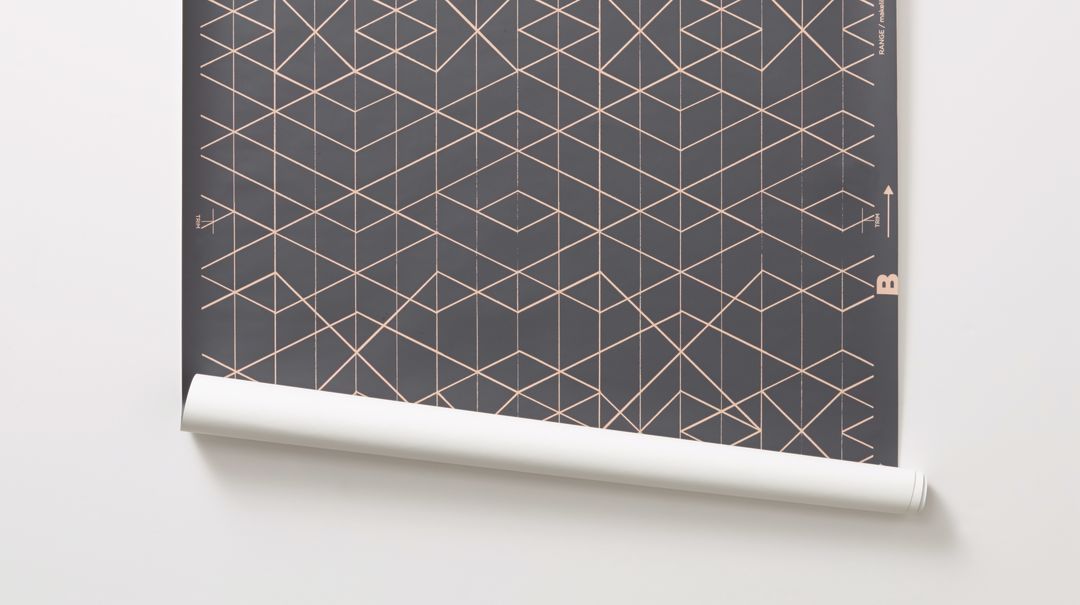
Image: Courtesy Makelike
Makelike co-owner Mary Kysar had a problem. She’d fallen in love with the handmade Moroccan and Algerian rugs a pair of friends were importing to Portland. But at her own home, the carpets’ complex designs battled with the riotous wallpaper patterned with fungi and succulents that are her own design signature. “It’s great to have a framed piece of art that’s really wild, but if you put that art on all four walls, it’s tough to put any other pattern—or rug, or pillow—with it,” she admits. Enter Makelike’s new trio of wallpaper designs, which distill bold, geometric North African patterns into simple grids of lines in subdued shades—all hand-drawn and screen-printed on recyclable paper. “We like seeing the hand in things. There’s nothing done on computer,” Kysar says proudly. “These are wallpapers you can live with.”
Get it: $150/roll at shop.makelike.com.
Bolling & Co.: Vintage M. H. Birge & Sons “Tooled ‘Leather’ Peacock Feather”
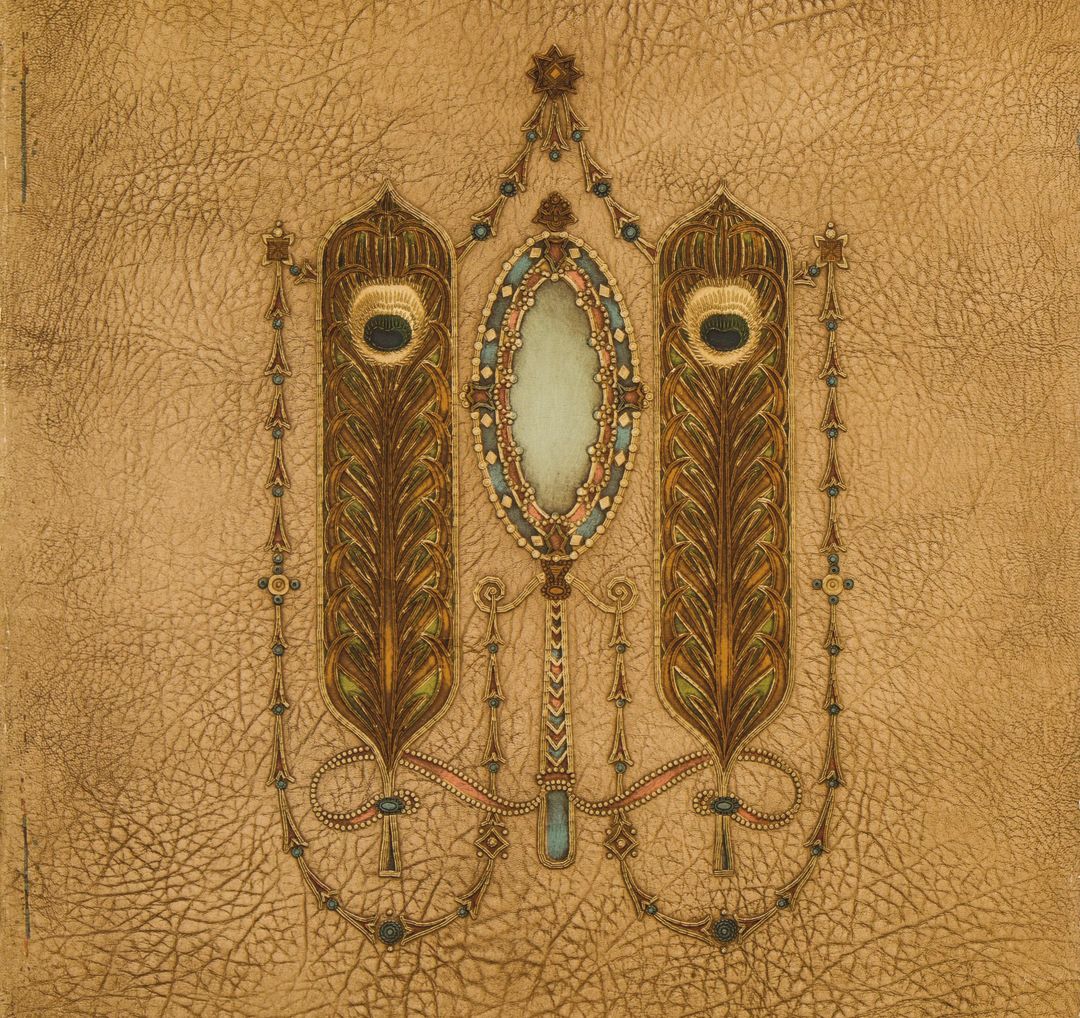
Image: Courtesy Bolling & Co.
In the early 1900s, wealthy Portlanders festooned West Hills and Irvington homes with cutting-edge, richly ornamented wallpapers by top American wallpaper firm M. H. Birge & Sons. A century-plus later, historian and wallpaper purveyor Bo Sullivan finds new homes for those same hand-block-printed works in a new generation of soulful modern houses “not afraid to be a little emotional about materials and finishes,” as he puts it. With its highly stylized peacock feather cartouche, this paper was often used as a centerpiece on a full wall of meticulously hand-stained, faux–tooled leather paper—a novel trend back in 1908. Although Sullivan does occasionally sell full rolls of pre–World War II wallpaper, most are sold as framed pieces. “In the past, wallpaper was done with an eye toward art and longevity, with oil-based paints and machinery that doesn’t exist anymore,” he marvels. “It’s really a lost art. Art on the wall.”
Get it: $25–200/square foot or $750–3,500 for framed papers; by appointment only via bollingco.com.
